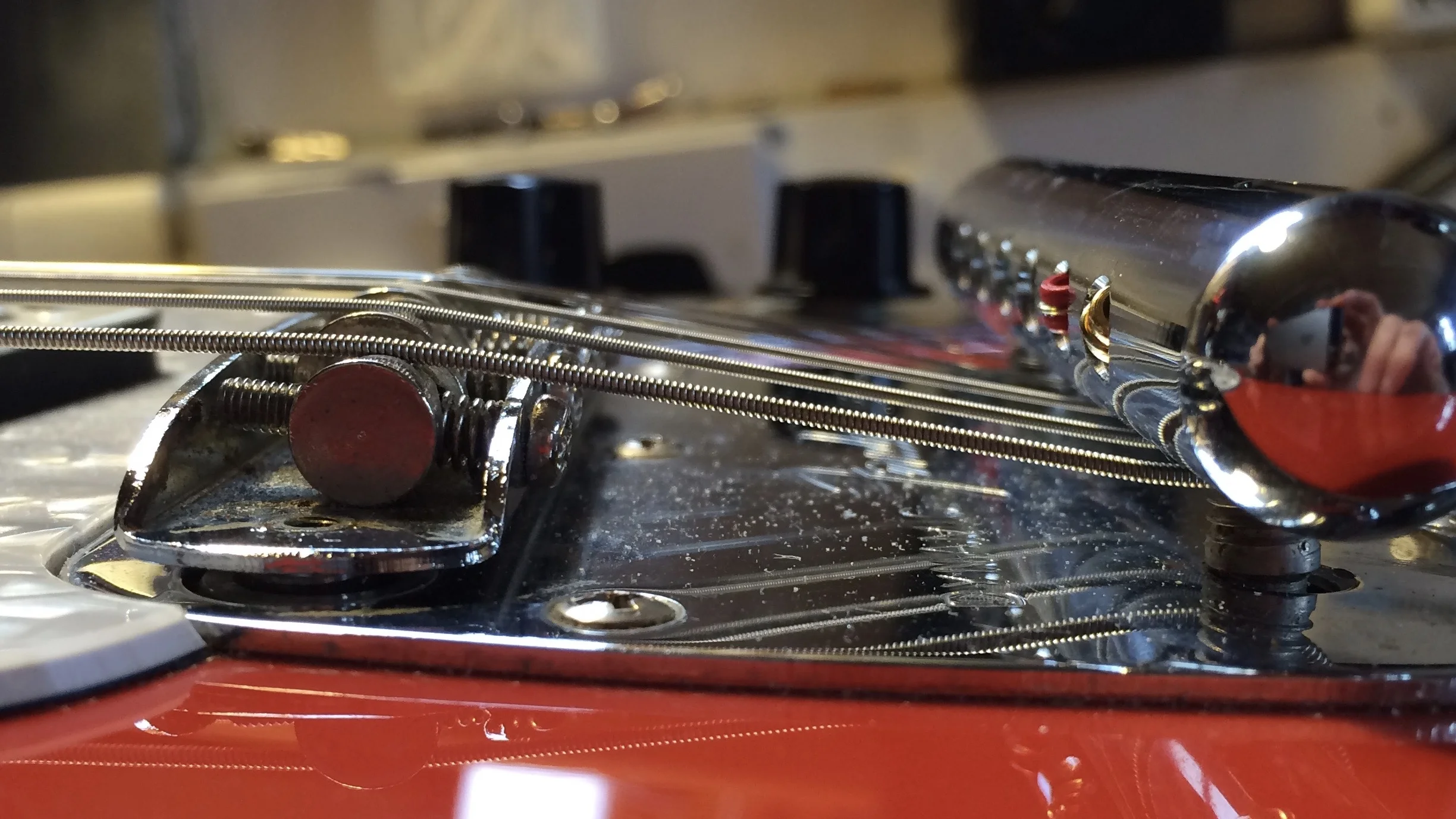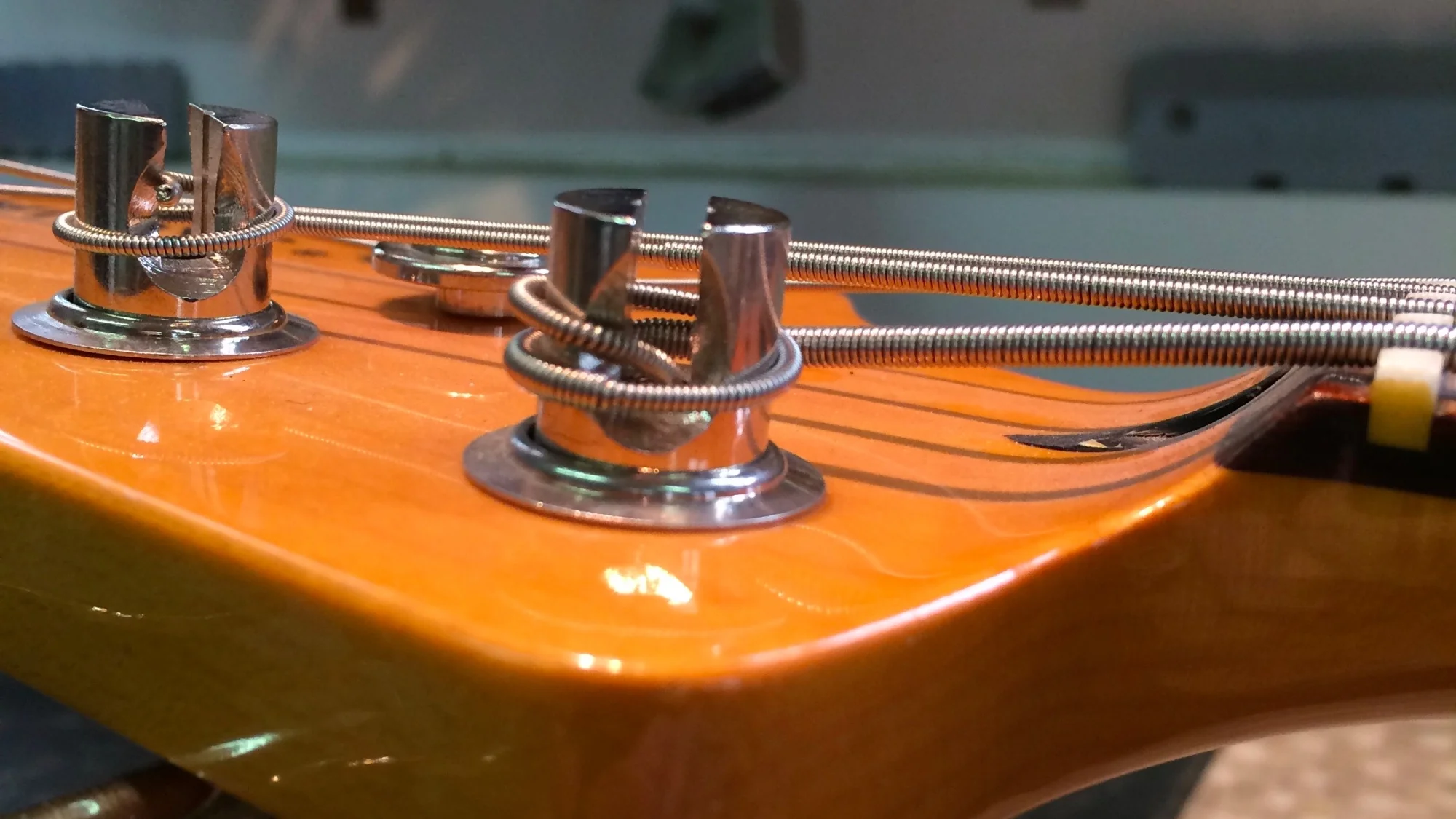We can’t really measure neck relief with a ruler. Feeler gauges are a possibility but I feel they’re not always ideal. Luckily, there’s a solution…
Read MoreUp until a little while ago, the term ‘witness points’ was not one I knew. Turns out, though, it’s a very useful concept to understand — especially if you’re having problems getting a string intonated before running out of saddle travel.
Check it out…
Read MoreYour ball ends need firm contact for the best results.
For some good guitar advice (and just a little more innuendo), read on…
Read MoreGetting the top of an acoustic instrument moving is vital to getting the best tone from it. You have to make sure you're transferring as much of the strings' energy as possible and a too low a saddle can mess that up and really kill your tone.
Find out more…
Read MoreWhat we generally refer to as the ‘offset’ Fenders (Jazzmaster, Jaguar, Mustang, Jag-Stang) can sometimes be a quirky bunch and one of their more common annoyances is the bridge.
Often, notes can suffer from a lack of focus and sustain. Strings can ‘jump’ from their slots if played even a little too hard, and the bridge itself can be buzzy and rattly. Sometimes you’ll even have saddle height screws vibrating loose and rattling, or even falling out.
Read MoreString break angle can cause problems if it's not correct. Too shallow an angle, in particular, can be a source of buzzes, rattles, and general tone-sucking.
Get the skinny on sting angles and avoid sucked tone.
Read MoreSo, I want to talk about a few tips related to string ‘break angle’ — the angle the string takes over the nut or saddle. However, I reckon that it might be useful to explain what I mean and to give a little background on this area first.
Let's start with the break angle at the nut — that's the angle at which the string leaves the nut and heads for the tuner.
Read More








